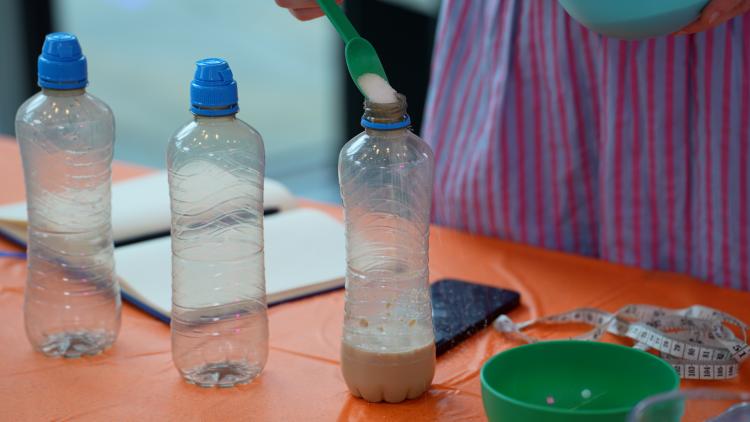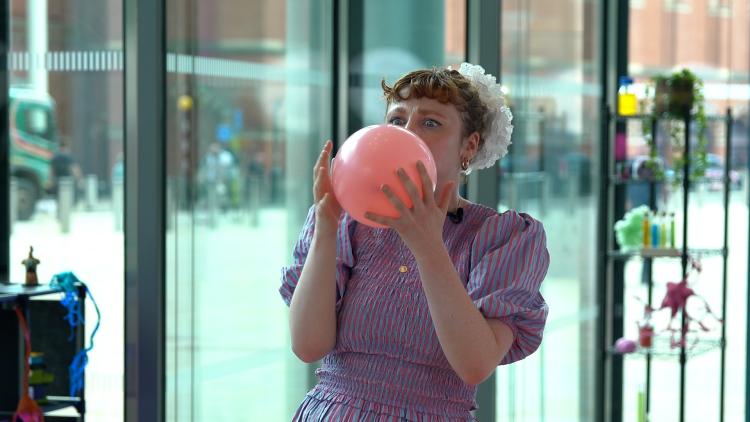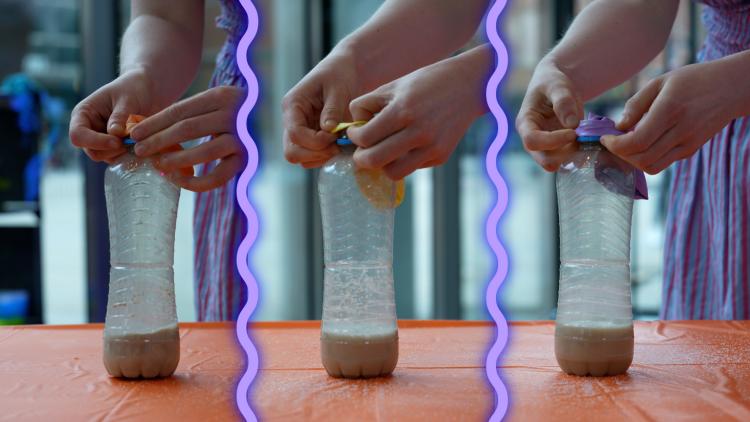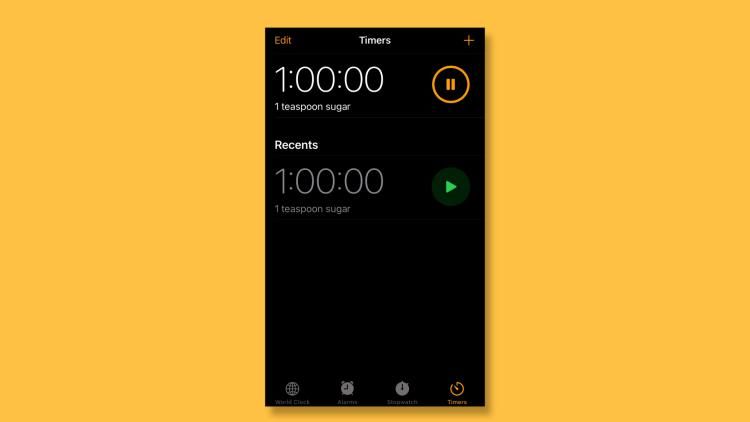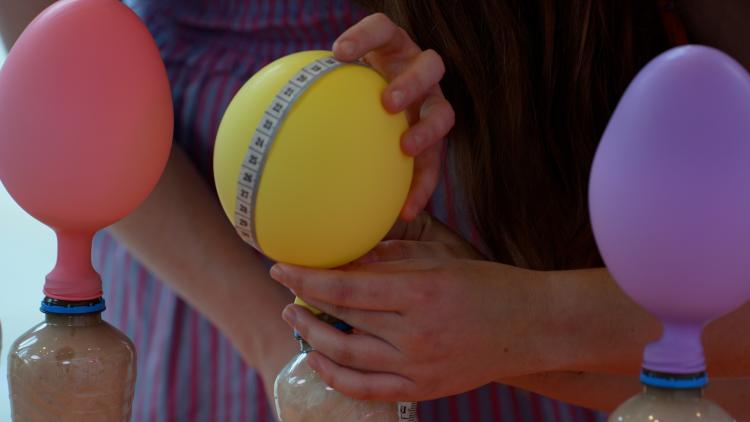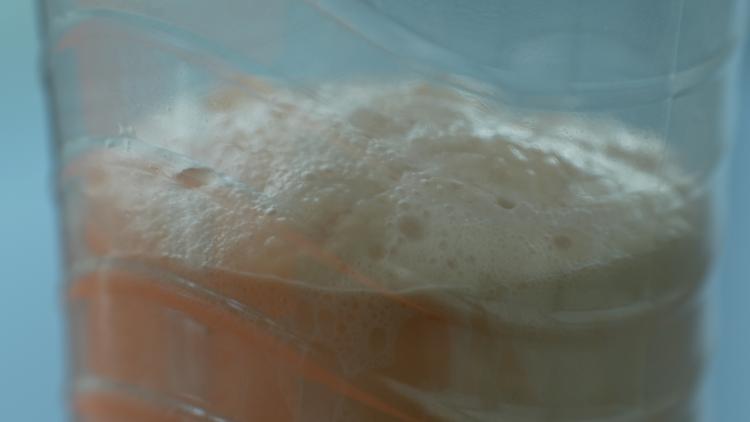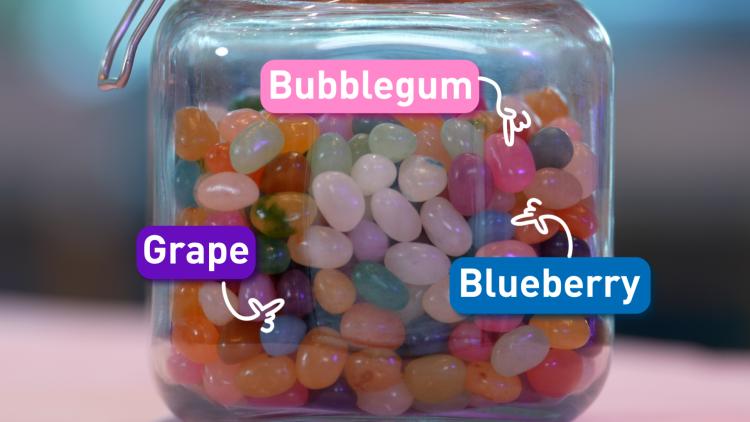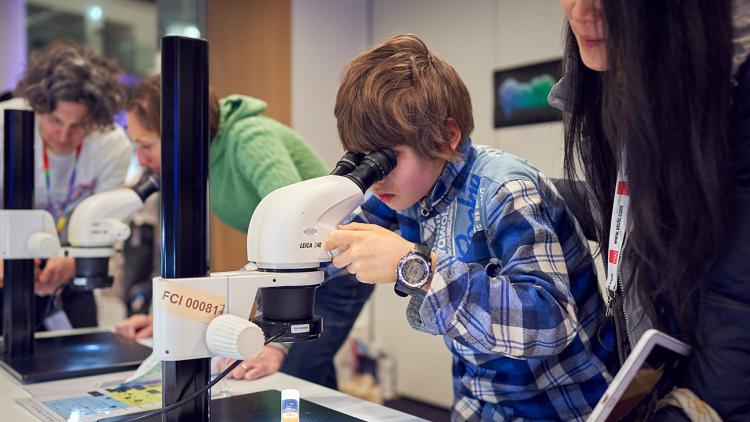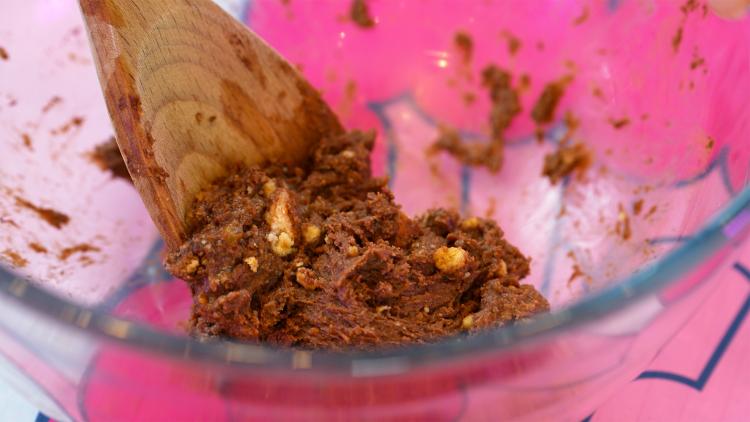Bring a balloon to life
This activity will take 60 minutes, is for ages 7 to 10 with supervision needed.
Have you heard of yeast before? Yeast makes bread fluffy and delicious.
Yeast is only one small cell, but it clumps together into groups of cells. A loaf of bread can have over a billion yeast cells in it.
One yeast cell divides into more and more yeast cells very quickly.
What you'll need
- A stopwatch – you could use a phone
- Four plastic bottles the same size, max 500ml
- Four balloons
- Four packets of instant or active dry baker's yeast
- A funnel – you could use some rolled-up paper
- A measuring tape or ruler
- Warm water
- Sugar
Step by step
Fun facts
A microscopic marvel
We can’t see yeast without a microscope, but this experiment shows that it is alive. Just like humans, yeast eats food for energy and makes gas as it breathes. The gas yeast makes is called carbon dioxide.
When you give yeast more food, they can divide into more yeast and make more gas, which blows up the balloons quicker. There’s a limit to how much sugar yeast can devour in an hour so you might reach a point where adding more sugar won’t make more gas.
If you've eaten fluffy bread, you’ve eaten yeast. The gas yeast makes is trapped in the stretchy bread dough, creating millions of tiny air bubbles.
Crick scientists
Here at the Crick, we have a special fermentation lab that grows yeast on a massive scale – over 10,000 litres a year. Fermentation is the name for when yeast eats sugar and makes gas (and sometimes alcohol).
Because yeast is only one cell, it gives our scientists an easy way to study how cells grow and divide. This is interesting to scientists as mistakes can happen as cells divide. These mistakes can cause diseases such as cancer.
Our scientists can also use yeast as mini factories. Yeast produces different chemicals which they can grow and use in their experiments.


